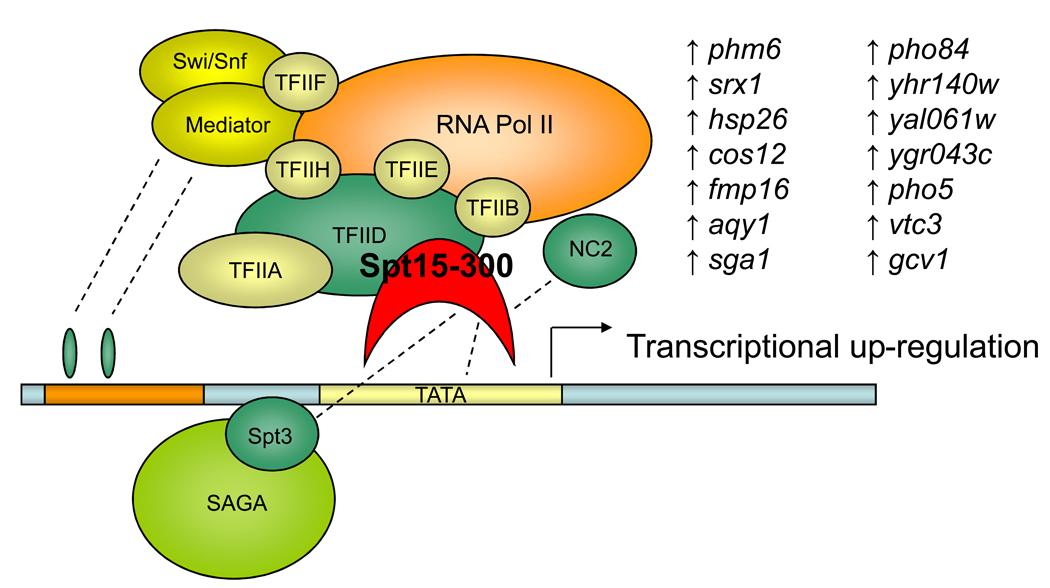Figure 3.
A schematic representation of the global transcriptional machinery engineering gTME method developed by Stephanopoulos and coworkers [47••,49]. Complex phenotypic changes are possible via altered regulation of multiple genes. Such transformations can be achieved by concentrating mutagenesis on a single protein among the various components of yeast’s transcriptional machinery. Expression of the mutant TATA-binding transcriptional factor Spt15–300 (red) resulted in significant up-regulation of 14 genes. All these overexpressions act in a concerted manner to increase yeast’s tolerance to high concentrations of ethanol and glucose.

